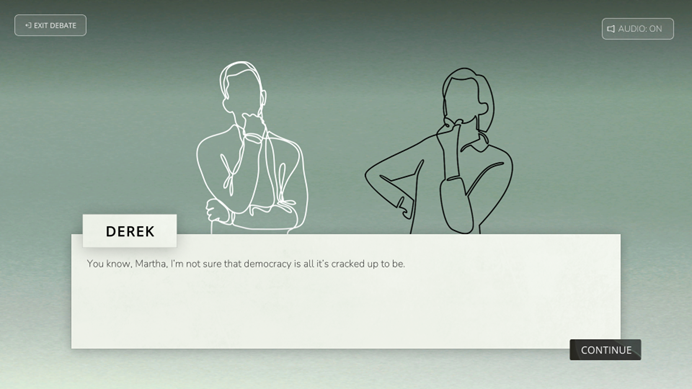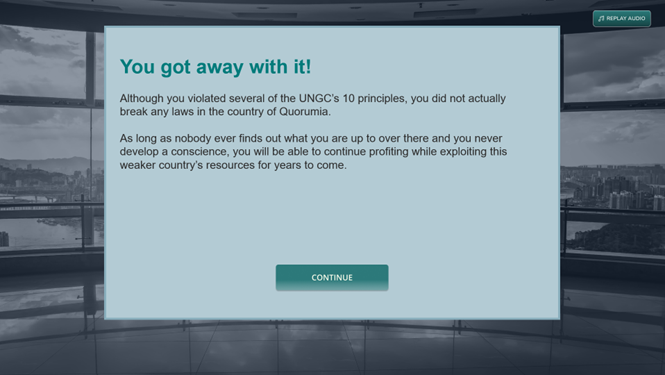Educational Technologists use branching scenarios to provide learners with an immersive narrative experience that embodies learning concepts and allows them to make impactful decisions on how the learning journey plays out. This has some key advantages over more traditional, passive ways of learning, such as promoting learner engagement, allowing better retention, giving immediate, tailored feedback, and providing learners with a more realistic and meaningful learning experience.
What are Interactive Branching Scenarios?
To understand how interactive branching scenarios can offer all these advantages as part of an active learning process, we must first understand exactly what a branching scenario is. They are like the choose-your-own-adventure books that those of us of a certain age may have enjoyed in our childhood. I’m not saying only 90s kids will know, but that demographic will certainly remember the thrill of turning to page 57 to find out their grisly fate.

What makes a branching scenario interactive is the fact the learner has an active influence on the way the story unfolds; the narrative can go in very different directions depending on user input, be it through choosing a page to turn to or by clicking a choice button on a screen.
The type of branching scenarios we see today are a bit more high-tech than the lo-fi ink-on-paper versions we grew up with, and this can offer us the ability to make even more complicated branching scenarios than those relics of yesteryear. Furthermore, rather than traversing dungeons in search of loot and monsters to kill or battling extraterrestrial supercomputers in command of alien hordes, the stories that Educational Technologists create tend to cover less fantastical subjects, such as advising a small business owner on an IT strategic plan or debating the legitimacy of democracy with a contrary classmate.

Meaningful Choices
The key mechanic of a branching scenario is decision-making; learners are presented with difficult choices that must be made to progress through the learning interaction. These choices embody key course concepts in a way that makes learners engage with them actively and requires them to employ their judgement, critical thinking and problem-solving skills, and prior knowledge base in order to move the story along. By placing these choices in a “real-world” scenario, we can make the learning material come alive as the learner can better envision themselves having to make such tough calls in their future lives and careers.

Learner Engagement
Learning interactions that employ decision-based branching are both fun and engaging because they challenge the learner to make difficult judgment calls, and the consequences of their choices can lead the story in unpredictable directions. This is especially true in cases where the scenario is presented to the students as a primer before the concepts have been introduced in the course. Most importantly, branching scenarios put learners in control of their learning. Not only do they get to choose which branch to take, but in doing so, they choose to reject certain paths or, alternatively, they can opt to take them all. The very fact that a scenario has many branches can pique the learner’s curiosity; completionism can drive some learners to want to explore all the paths, leading them to repeat the experience several times, which can have the beneficial side effect of reinforcing their learning. This is a much more exciting and engaging way to learn than the passive intake of information seen in traditional pedagogy and some forms of elearning.

Better Retention
Being an active participant in the unfolding story leads to learners having better retention of course material that has been designed into the experience. By making choices based on course concepts situated in realistic scenarios, learners feel like they have lived this experience themselves, and the lesson they have learned enters their long-term memory. In this way, we are able to simulate experiential learning with the added advantage that learners can explore choices that might have unwanted and even damaging consequences if applied in real life.

Immediate Feedback
The choices we present to the learners encourage them to access their knowledge base and deploy their existing skills in order to find the best path. Should they get it wrong, it is no big deal. Not only do interactive branching scenarios provide a safe environment in which learners can experiment and not face real-world repercussions for their errors, but we can program immediate, tailored feedback that tells them in precise terms exactly how good or bad the choice they just made was. In this way, immediate feedback allows learners to learn equally from both their mistakes and their correct choices.

Bottlenecks
With all this user choice, it could be possible that students who do not opt to replay branching scenarios might miss out on some of the available learning. To ensure against this outcome, we can design bottlenecks into the scenario; these are events that occur regardless of learner decisions. Bottlenecks can be used to control the complexity of the branching and keep the potential paths from becoming too tangled; intricate twisty stories may be desirable for dungeon crawling adventures, but they are less necessary for the interactive conversations and business cases we are preparing. More importantly for educational technologists, bottlenecks can ensure that essential concepts embodied in these events will be experienced by all students, whether they choose to play through the experience just once or several times.

Multiple Endings that Reward or Punish
In these scenarios, learners are asked to make decisions that will open different paths for them to follow. As designers of branching scenarios, we can borrow a technique from narrative video games where following these paths can lead to different and very distinct endings informed by the overall trend of their choices. In this way, the student can reap the consequences of their actions by receiving either a reward in the form of an uplifting positive outcome for their character or punishment through a disappointing negative ending to the experience. It is important to note that the “punishment” here is not intended to deter the student. Rather, the affordance of such experiences being repeatable should encourage them to try again (and even again, and again, and again) until they find the perfect path and receive that sweet, tantalizing “reward” in the form of a “happy ending.”

***
As we have seen, branching scenarios offer the Educational Technologist an inspiring and versatile method of transmitting learning concepts in a way that allows the learners to both engage with the material and take control of their own learning. By taking advantage of non-linear storytelling techniques and marrying them to gamification, we can create engaging learning interactions that embody course concepts in a realistic fashion and show students the consequences of their decisions through immediate, tailored feedback and multiple endings that can reward or punish.
Related articles:
- [VIDEO] Gamification
- Gamification in 3 questions
- 4 Strategies to keep students engaged in online learning
- Play and the Adult Learner: Test Your Knowledge!
- Motivation and Success from the Brain’s Perspective: Test Your Knowledge
- 7 elearning trends to keep you ahead of your competition
- Behind the Scenes of Motivation
- 8 key elements of learner engagement
- 5 musts for motivation in online learning




